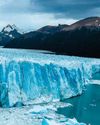KITCHEN SINK CHEMICALS EXPLAINED
How It Works UK
|Issue 203
Every home has an armoury of liquids to combat stains and leave surfaces germ-free. But how do they do their job?

BLEACH
THE STAIN REMOVER
Bleach is a general-purpose cleaning product that disinfects and removes colour from organic stains. However, the same reaction that removes stains also damages organic fibres, so today bleach is far more likely to be used as a toilet cleaner thanks to its antimicrobial properties.
Bleach is commonly a solution of a pale yellow-green chemical called sodium hypochlorite. This breaks down ‘chromophores’, the parts of some molecules that absorb certain wavelengths of light so that only some are reflected, giving colour. Until recently, little was known about sodium hypochlorite’s antimicrobial action, but it's now thought it causes a microbe’s proteins to unfold, destroying them.
Sodium hypochlorite decomposes slowly in water, releasing chlorine, which explains bleach’s characteristic smell. The reaction is slowed by the presence of an alkali, so bleach also usually contains a small amount of sodium hydroxide. Conversely, acid speeds up this reaction. For this reason, and because chlorine gas can cause serious lung damage, bleach should never be used in combination with other cleaning agents.
 WASHING POWDER
WASHING POWDERTHE WATER BOOSTER
Diese Geschichte stammt aus der Issue 203-Ausgabe von How It Works UK.
Abonnieren Sie Magzter GOLD, um auf Tausende kuratierter Premium-Geschichten und über 9.000 Zeitschriften und Zeitungen zuzugreifen.
Sie sind bereits Abonnent? Anmelden
WEITERE GESCHICHTEN VON How It Works UK
How It Works UK
20 WEARABLE HEALTH TRACKERS
Whether you strap a wellness coach to your wrist or weave subtle sensors into your clothes, these devices are revolutionising how we track our health
9 mins
Issue 210
How It Works UK
SUPERPOWERED PLANTS
The world of plants is vibrant and diverse, just like this book.
1 min
Issue 210
How It Works UK
SECRET STORIES OF LOST BEASTS
We're all aware of the mighty dinosaurs that once roamed Earth, but there are so many weird and wonderful species that have been lost to time.
1 min
Issue 210

How It Works UK
ALL ABOUT BLIMPS
Is it a bird? Is it a spaceship? No... it's a non-rigid airship
2 mins
Issue 210
How It Works UK
SUPER QUESTERS MISSION: RAINFOREST MAGIC
Join adventurers Leo, Lilli and Bea as they transform into superheroes and journey to the rainforest in the pursuit of knowledge.
1 min
Issue 210

How It Works UK
HOW THE MIGHTY MAMMOTH RULED THE ICE AGE
Meet the prehistoric giants that roamed the Arctic Circle thousands of years ago
4 mins
Issue 210
How It Works UK
Have they found LIFE ON MARS?
Although it's by no means certain, scientists are slowly accumulating evidence that life once existed on the Red Planet
2 mins
Issue 210

How It Works UK
HOW FAST DO GLACIERS MOVE?
The speed at which a glacier flows depends on its mass, the depth and slope of the underlying rock bed and friction.
1 min
Issue 210

How It Works UK
HOW IN-FLIGHT WI-FI WORKS
This technology allows you to scroll to your heart's content while killing time at cruise altitude
3 mins
Issue 210

How It Works UK
HOW WIGWAMS WERE BUILT
Discover the construction and living conditions inside these traditional domed dwellings
1 mins
Issue 210
Listen
Translate
Change font size

